Have you ever wondered how to ensure that your website or app is user-friendly? Discover the top proven methods of usability testing & how they can benefit your design process in this informative blog.
What exactly is usability testing?
Usability testing helps in finding pitfalls and errors while using a product. The main ingredient in conducting these tests is empathy. What we have to remember in usability tests we test the interface’s usability for the end-users. There are different types of usability testing methods that you can use for your project. Knowing when and why one should use a specific method would greatly influence the efficiency and results.
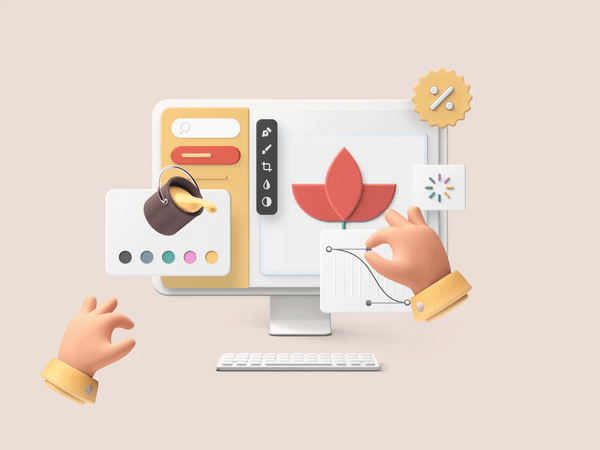
One thing that people always need to remember is that you are not your consumer. One of the major obstacles in usability testing proves to be confirmation bias. Take the analogy of a restaurant chef and the guests. A chef can taste a soup to confirm the taste, yet, the end-users are the guests. The success of the restaurant depends on the reviews of the guests and not on the chef.
According to a survey by UserTesting, 82% of companies that conduct user research see improvements in their product’s usability.
Getting familiar with the different methods of usability testing
One can wonder which technique is applied for usability testing. But with the advent of technology, usability testing has taken many shapes and forms. You can pick and choose one or try a combination of them to yield a greater perspective.

Interestingly, with prior and better usability testing, the unearthing of pain points becomes easier and problems become more identifiable -hence increasing the profit and, in turn, positively influencing the customer experience.
Before we jump into different methods, let’s first segregate it into different types:
1. Remote versus in-person testing

Remote testing helps in collecting data from different geographical locations. There is an ease in reaching out to multiple people through telephonic conversations, letters or emails. However, in-person testing gives in more in-depth information about the usability of the product even though the sample size could be lower than remote testing. This is why remote testing is less time-consuming but shallow and in-person testing is more time-consuming but unravelling.
2. Exploratory versus comparative testing
As the word suggests, exploratory testing poses open-ended questions and is generally used in the early stages of UX research. The participants add more layers to the research and help in identifying pain points, gain points, hopes, fears and solutions.
In comparative testing, the participants are asked if they prefer either of the two pre-made solutions for a particular problem. It narrows the possibilities of identifying the gaps. However, it works best for a quick vote in usability testing. These two methods help in assessing the satisfaction of the consumer with the solution or product.
3. Moderated and unmoderated testing
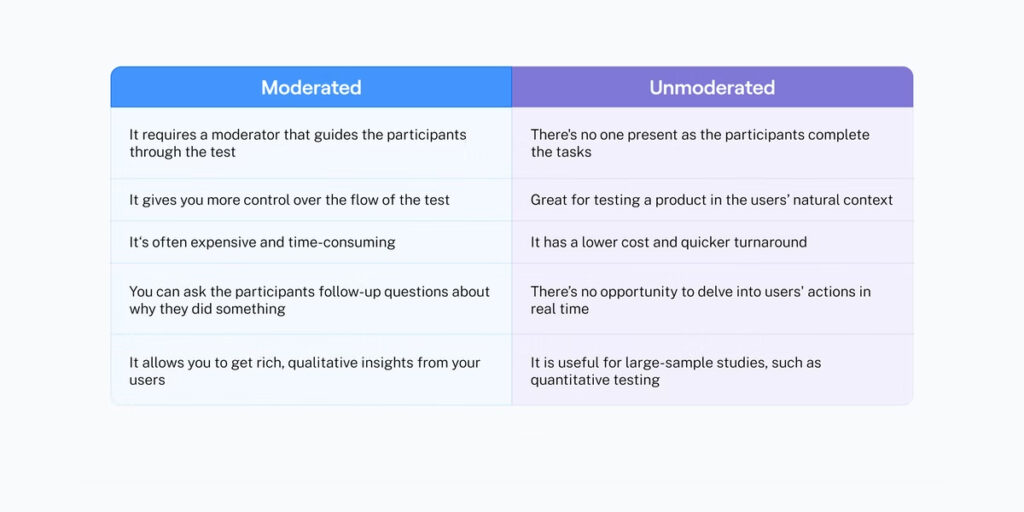
To simplify the terms, moderated means controlled in a specific way be it in sample number, geographical location, etc. The participants are observed in a controlled setting. It could be in a lab, in a school, in a public space, etc. Unmoderated testing doesn’t need a specific sample size or a controlled setting. Hence the answers tend to be precise and concise without giving much room to ambiguity. Moderated testing gives a clue on the rationale behind participants’ choices for open-ended problems while unmoderated testing gives an idea of behavior patterns on very specific problems.
Read More: 5 Proven Methods to Solve Customer Needs With UX
4. Quantitative and qualitative testing
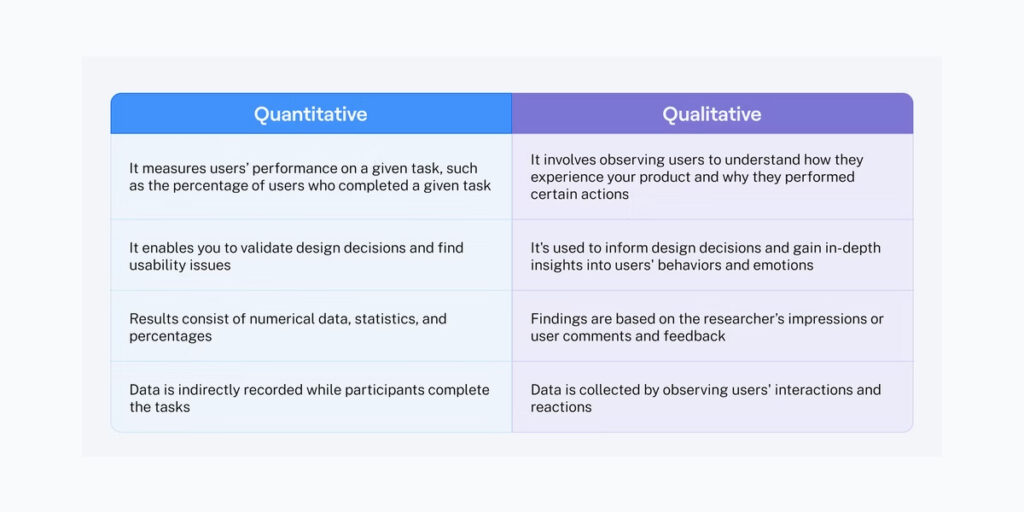
These modes of testing can be further divided into two categories -Attitudinal and Behavioral. The Attitudinal aspects of Quantitative and Qualitative usability testing how a person feels about the product, its architecture and design. In the Behavioral aspects of the same, it tries to look into how a user will interact with the product under different scenarios. Qualitative testing often needs fewer people than quantitative testing.
These four types of testing can be mixed and matched to generate a usability testing method that works best for your project.
A Proven Approach to Usability Testing Techniques that Are Widely Used:
1. Lab usability testing
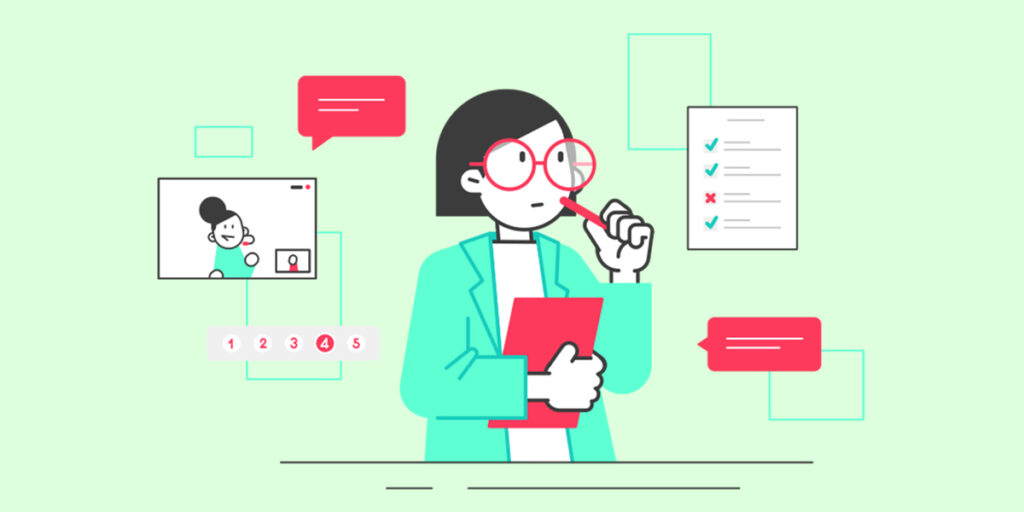
Here, we use a moderated, in-person and qualitative testing type to observe and collect data from users. A physical space would be designated with a limited number of participants to test a product. The questionnaires are generally more exploratory than comparative unless they are a seasoned user of a product.
2. Guerilla testing
Here, we use a moderate, in-person and quantitative type of testing. The participants are chosen at random from different sections of the society who have no history with the product. They are given a usability test with a promise of incentive after completion. The sample size is often large.
3. Phone interviews and surveys 📞
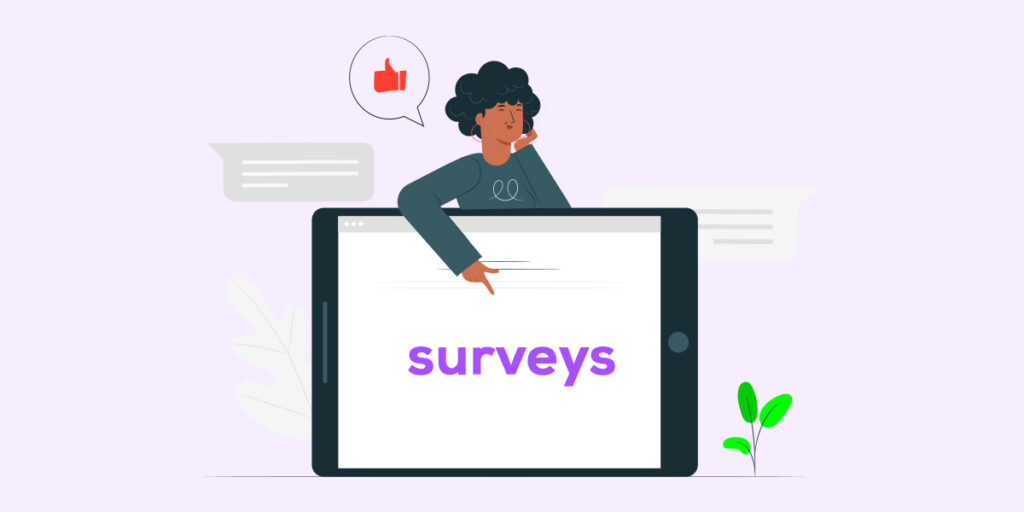
These methods use moderated, remote, and quantitative testing. The questions can either be exploratory or comparative depending on the research stage. We can cover large geographical areas using this method with a large set of precise data.
4. Card Sorting
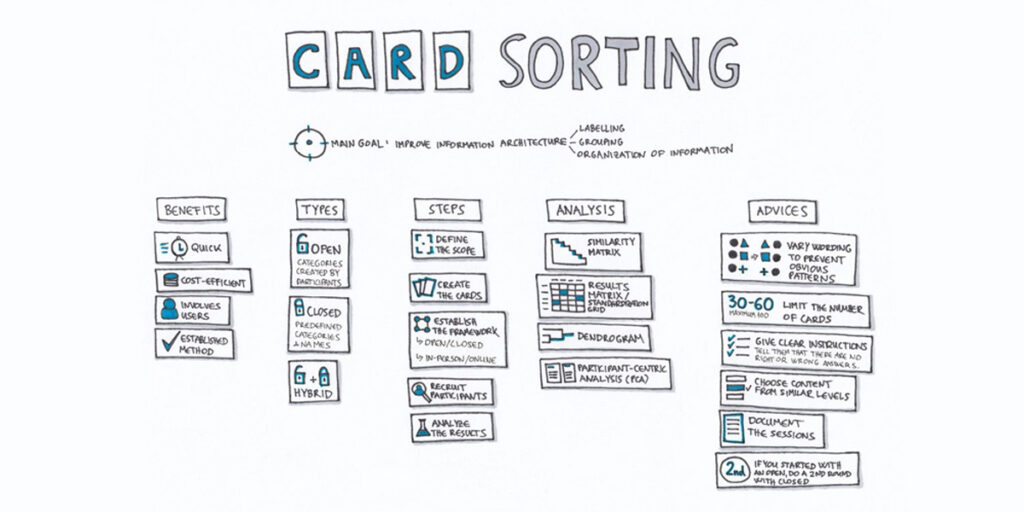
It can be done virtually or in person. Generally, a limited number of participants are required for card sorting usability testing. This helps in getting feedback on navigation and layout for a website or product. The participants share the logic behind their arrangement.
5. Eye-tracking
This usability testing is generally done in a controlled environment with a limited number of participants. But, the moderator may not interfere or interact with the participants unless necessary. The participant’ eye gazing movements on a digital product helps in creating heat maps. This helps the observer to understand where the user anticipates the placement of a particular function -be it for finding information, navigating through websites or buying a product.
These are some of the popularly used. You can use this information to determine which technique is applied for usability testing for a particular product. Those who are afraid of investing in usability testing often end up spending more on corrections which prove to be costlier. In usability tests we test the interface’s usability and this helps in finding issues across all sections of the product. Hence, it is in the best interest of stakeholders and researchers to invest in Usability testing before rolling out their product in the market.
Usability testing is a powerful tool for discovering what people really need, want, and expect from a product.
Jakob Nielsen, Usability Expert
FAQs About Usability Testing
How do you conduct a usability test?
In a usability-testing session, a participant and a facilitator are involved. The facilitator assigns tasks to the participant and monitors their behaviour. The facilitator gives the participant assignments. The facilitator monitors the participant’s behaviour and hears feedback as they complete these tasks.
What are some common mistakes people make when conducting a usability test?
Not setting intentional goals, not setting the right tasks, recruiting the wrong participants, using design terminology when speaking to a respondent, and conducting only one usability testing phase are some of the common mistakes that individuals make when conducting a usability test.
What are the benefits of conducting a usability test?
The benefit of usability testing is to learn how real people interact with your website and then make adjustments based on the findings. It is critical to ensure that your app or website is simple to use and that activities can be performed quickly; otherwise, users will leave and visit a competitor’s site.
A usability test’s primary goal is to collect data needed to discover usability flaws and enhance the design of a website or app. Even the greatest web design and development teams may benefit from usability testing since it identifies user pain points and locations where they become stopped or confused.
What are the methods of conducting usability testing?
Card sorting, in-person testing, remote testing, and A/B testing are all prominent techniques of usability testing.
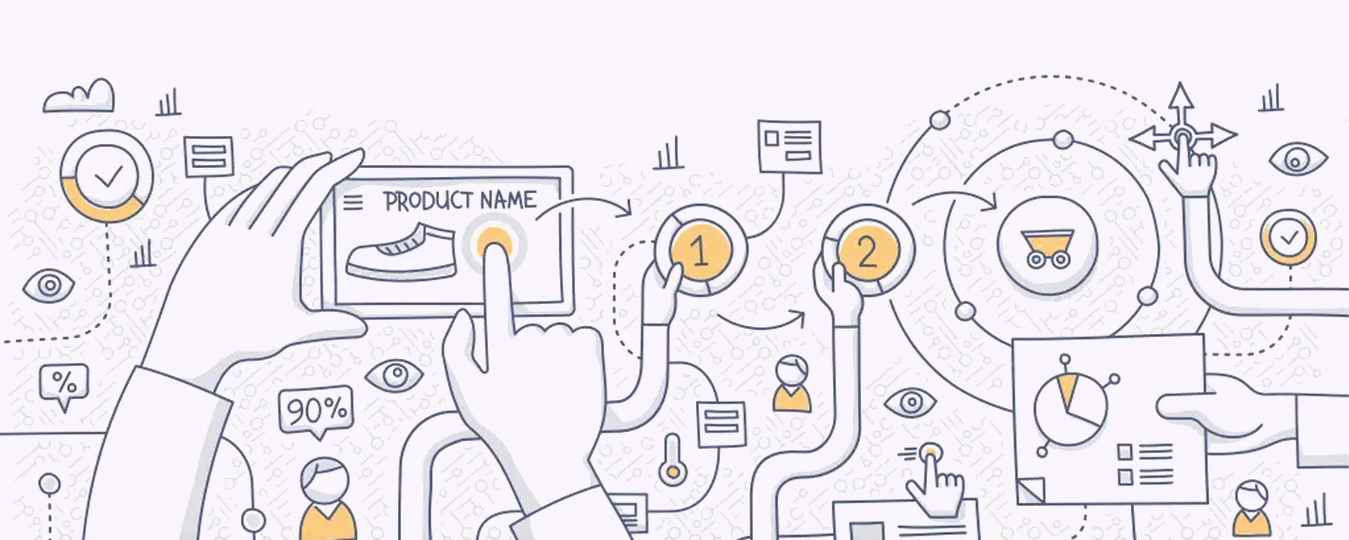
![What is Usability Testing? [with use cases] What is Usability Testing?](https://www.yellowslice.in/bed/wp-content/uploads/2023/03/What-is-Usability-Testing-370x245.webp)